Tomoki Ichikawa
Single-Shot Shape and Reflectance with Spatial Polarization Multiplexing
Apr 17, 2025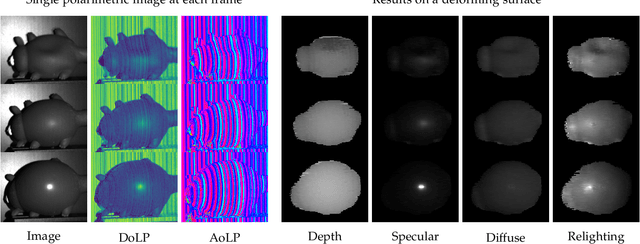

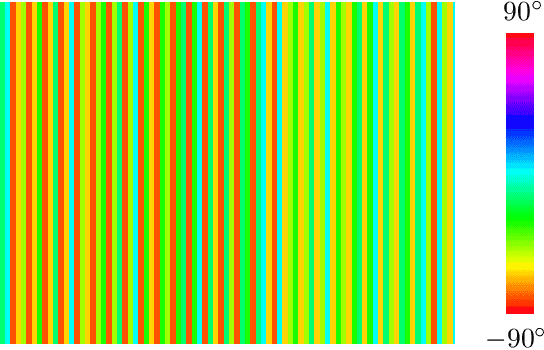
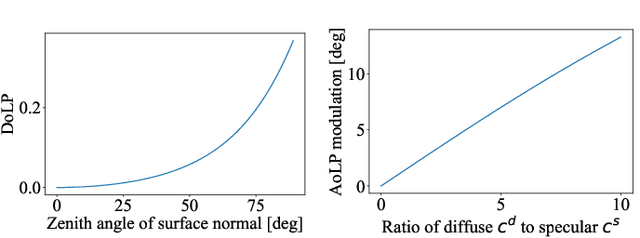
Abstract:We propose spatial polarization multiplexing (SPM) for reconstructing object shape and reflectance from a single polarimetric image and demonstrate its application to dynamic surface recovery. Although single-pattern structured light enables single-shot shape reconstruction, the reflectance is challenging to recover due to the lack of angular sampling of incident light and the entanglement of the projected pattern and the surface color texture. We design a spatially multiplexed pattern of polarization that can be robustly and uniquely decoded for shape reconstruction by quantizing the AoLP values. At the same time, our spatial-multiplexing enables single-shot ellipsometry of linear polarization by projecting differently polarized light within a local region, which separates the specular and diffuse reflections for BRDF estimation. We achieve this spatial polarization multiplexing with a constrained de Bruijn sequence. Unlike single-pattern structured light with intensity and color, our polarization pattern is invisible to the naked eye and retains the natural surface appearance which is essential for accurate appearance modeling and also interaction with people. We experimentally validate our method on real data. The results show that our method can recover the shape, the Mueller matrix, and the BRDF from a single-shot polarimetric image. We also demonstrate the application of our method to dynamic surfaces.
MAtCha Gaussians: Atlas of Charts for High-Quality Geometry and Photorealism From Sparse Views
Dec 09, 2024Abstract:We present a novel appearance model that simultaneously realizes explicit high-quality 3D surface mesh recovery and photorealistic novel view synthesis from sparse view samples. Our key idea is to model the underlying scene geometry Mesh as an Atlas of Charts which we render with 2D Gaussian surfels (MAtCha Gaussians). MAtCha distills high-frequency scene surface details from an off-the-shelf monocular depth estimator and refines it through Gaussian surfel rendering. The Gaussian surfels are attached to the charts on the fly, satisfying photorealism of neural volumetric rendering and crisp geometry of a mesh model, i.e., two seemingly contradicting goals in a single model. At the core of MAtCha lies a novel neural deformation model and a structure loss that preserve the fine surface details distilled from learned monocular depths while addressing their fundamental scale ambiguities. Results of extensive experimental validation demonstrate MAtCha's state-of-the-art quality of surface reconstruction and photorealism on-par with top contenders but with dramatic reduction in the number of input views and computational time. We believe MAtCha will serve as a foundational tool for any visual application in vision, graphics, and robotics that require explicit geometry in addition to photorealism. Our project page is the following: https://anttwo.github.io/matcha/
SPIDeRS: Structured Polarization for Invisible Depth and Reflectance Sensing
Dec 07, 2023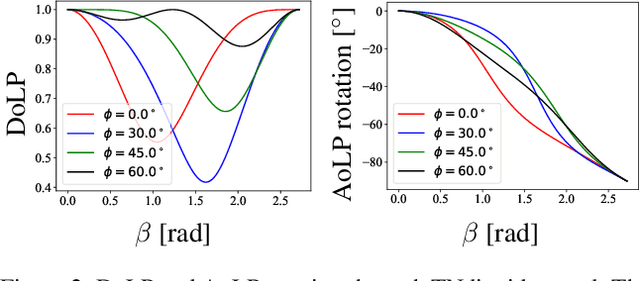

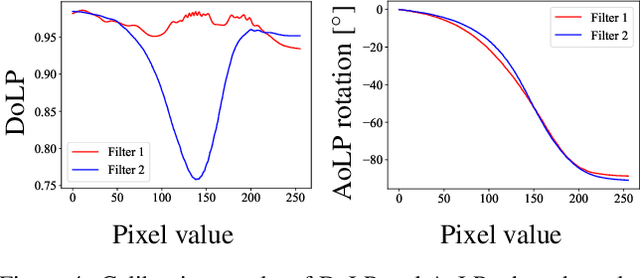
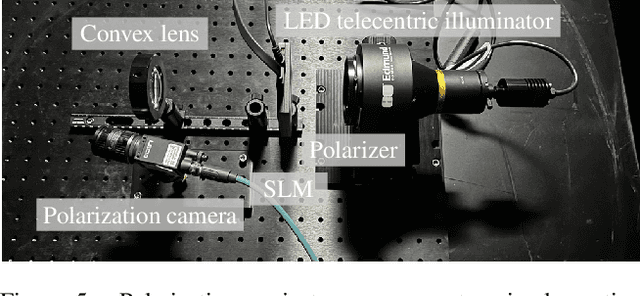
Abstract:Can we capture shape and reflectance in stealth? Such capability would be valuable for many application domains in vision, xR, robotics, and HCI. We introduce Structured Polarization, the first depth and reflectance sensing method using patterns of polarized light (SPIDeRS). The key idea is to modulate the angle of linear polarization (AoLP) of projected light at each pixel. The use of polarization makes it invisible and lets us recover not only depth but also directly surface normals and even reflectance. We implement SPIDeRS with a liquid crystal spatial light modulator (SLM) and a polarimetric camera. We derive a novel method for robustly extracting the projected structured polarization pattern from the polarimetric object appearance. We evaluate the effectiveness of SPIDeRS by applying it to a number of real-world objects. The results show that our method successfully reconstructs object shapes of various materials and is robust to diffuse reflection and ambient light. We also demonstrate relighting using recovered surface normals and reflectance. We believe SPIDeRS opens a new avenue of polarization use in visual sensing.
Fresnel Microfacet BRDF: Unification of Polari-Radiometric Surface-Body Reflection
Dec 08, 2022Abstract:Computer vision applications have heavily relied on the linear combination of Lambertian diffuse and microfacet specular reflection models for representing reflected radiance, which turns out to be physically incompatible and limited in applicability. In this paper, we derive a novel analytical reflectance model, which we refer to as Fresnel Microfacet BRDF model, that is physically accurate and generalizes to various real-world surfaces. Our key idea is to model the Fresnel reflection and transmission of the surface microgeometry with a collection of oriented mirror facets, both for body and surface reflections. We carefully derive the Fresnel reflection and transmission for each microfacet as well as the light transport between them in the subsurface. This physically-grounded modeling also allows us to express the polarimetric behavior of reflected light in addition to its radiometric behavior. That is, FMBRDF unifies not only body and surface reflections but also light reflection in radiometry and polarization and represents them in a single model. Experimental results demonstrate its effectiveness in accuracy, expressive power, and image-based estimation.
 Add to Chrome
Add to Chrome Add to Firefox
Add to Firefox Add to Edge
Add to Edge